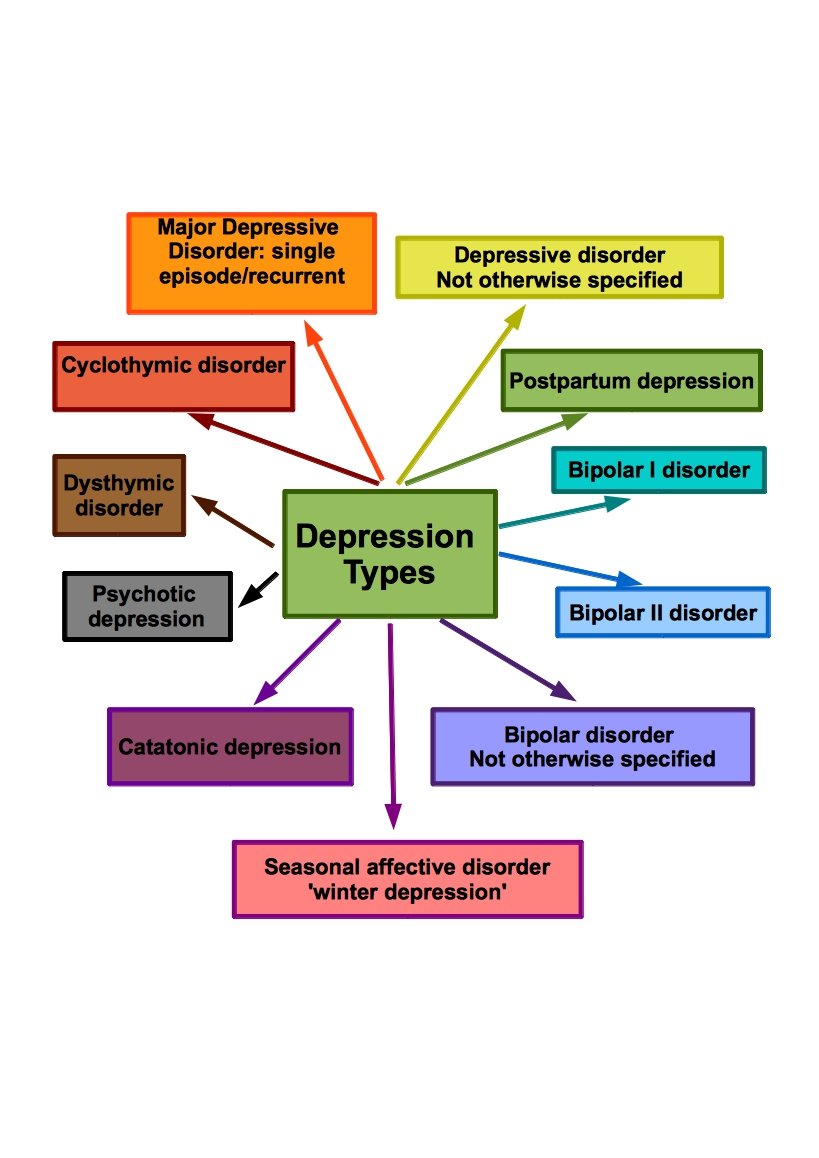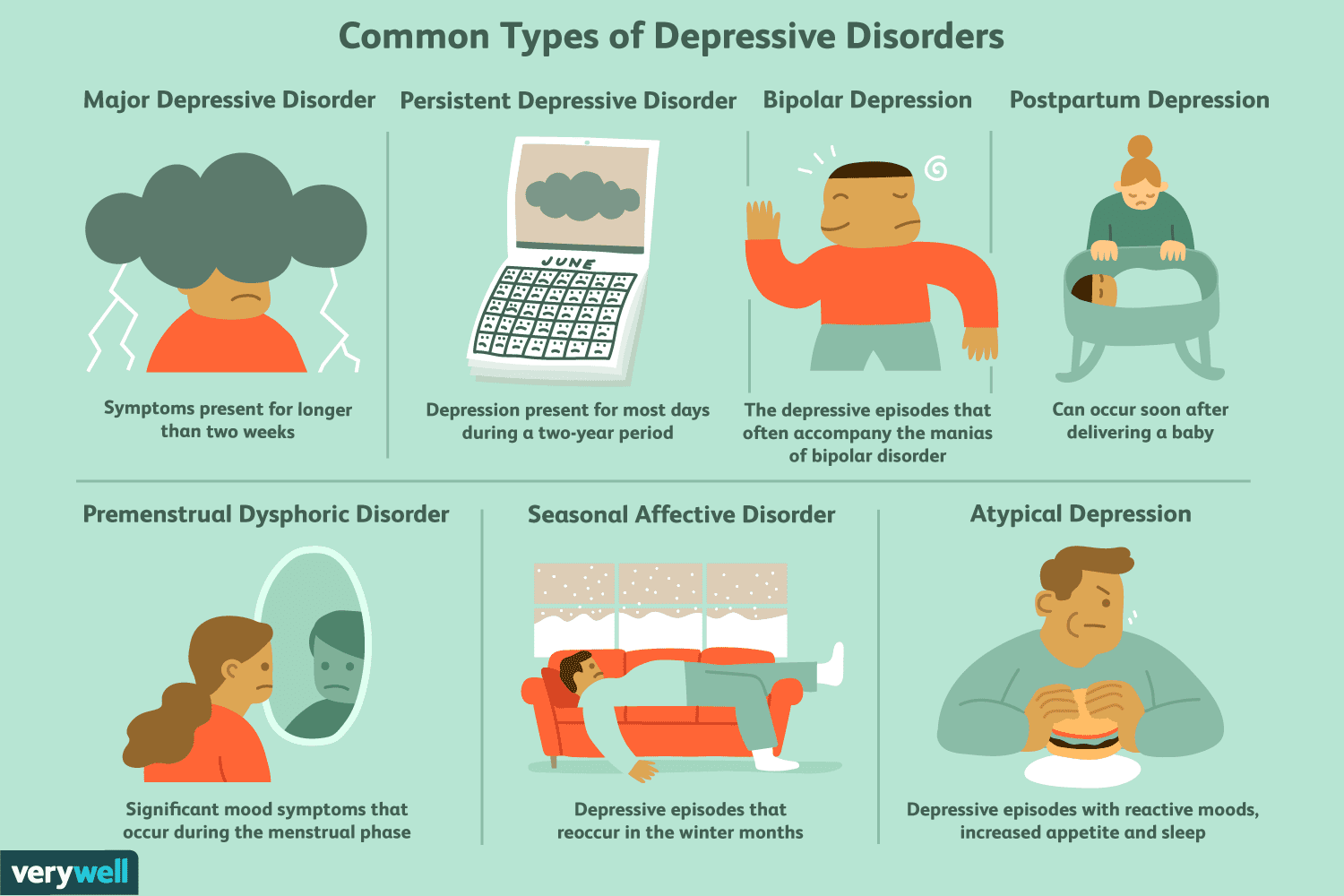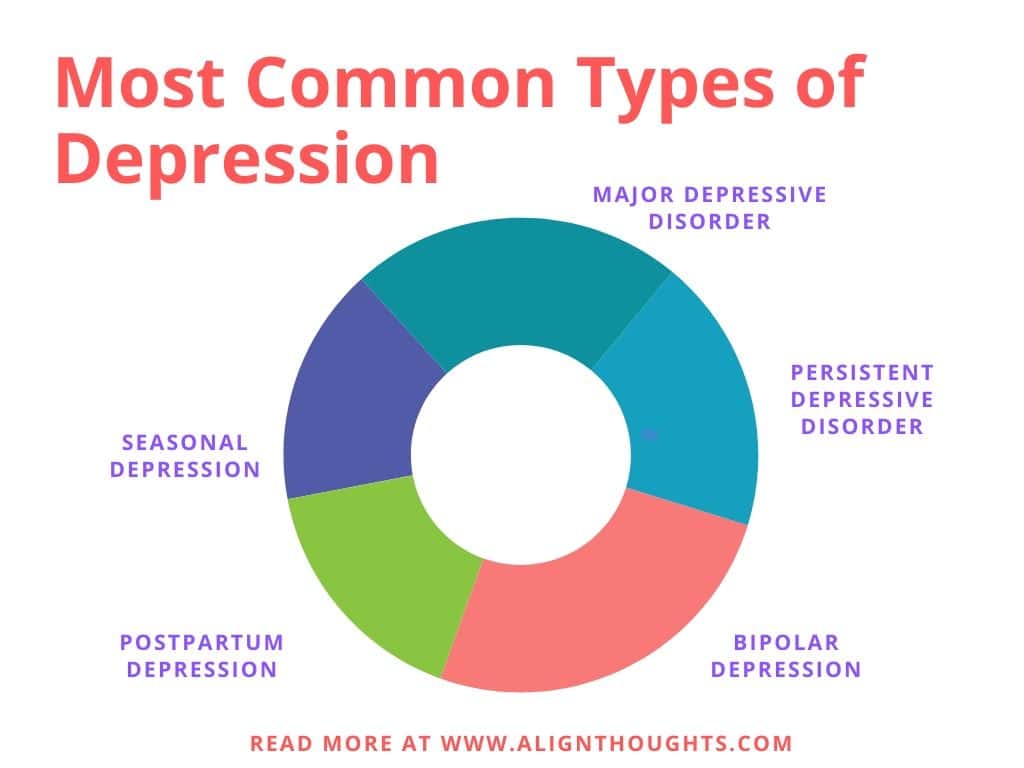Situational Depression/ Adjustment Disorder
Situational depression is not a clinical diagnosis, but a person may be diagnosed with adjustment disorder with depression symptoms and this may sometimes be referred to as situational depression. Adjustment disorder occurs when psychiatric symptoms set in within three months of a significant life event that causes significant stress. This may be a loss of a loved one, a divorce or other relationship problem, a physical assault, a move, or anything else that is personally stressful, even if it doesnt seem like a big deal to someone else
Adjustment disorder causes a range of symptoms, many of which overlap with depression:
- Feelings of sadness and hopelessness
- Excessive crying
- A feeling of being overwhelmed
- Inability to concentrate
- Difficulty functioning and doing normal activities
- Suicidal thoughts and behaviors
Unlike most types of depression, there is a known cause or trigger for adjustment disorder. In many cases a person is able to cope with a stressful event, but when coping is not possible the symptoms may persist and a diagnosis and treatment may be necessary.
Depressive Disorder Due To A Medical Condition
Symptoms of depression can be triggered by having another medical condition. This is quite common as medical conditions often affect how people see themselves and how they engage with the world.
If someone has a serious medical condition, life is almost always impacted and sometimes even threatened. Psychological support is often recommended for people with medical conditions because feelings of hopelessness, lack of control, uncertainty, change in identity, and relationships, all contribute to a persons mood.
Signs & Symptoms Of Depression
Its important to know the symptoms of depression and ask for help if you or your loved one is depressed. Symptoms vary from mild to severe and must last at least two weeks for a diagnosis of depression. These may include:
- Prolonged sadness, sometimes including frequent crying
- Loss of interest or pleasure in activities once enjoyed
- Changes in appetite, weight loss or gain unrelated to dieting
- Trouble sleeping or sleeping too much
- Repeated movements or slowed movements and speech
- Loss of energy or increased fatigue
- Easily irritated
- Feeling worthless, hopeless or guilty
- Difficulty thinking, concentrating or making decisions
- Thoughts of self-harm, death or suicide
Its important to discuss symptoms with your doctor because certain medical conditions can mimic symptoms of depression. Your doctor will do an examination to rule out general medical causes.
Read Also: Does Pristiq Help With Anxiety
The Other Types Of Depression
We know that brain imaging studies show that depression is not a character flaw or personal weakness.
It is associated with biological changes in the brain and body.
People with depression often have too much activity in the deep limbic systemthe brains emotional centers.
Not everyone with depression has the same underlying brain patterns.
Dr. Daniel Amen from Amen Clinics and BrainMD identifies 7 different types of brain patterns associated with depression. Knowing what your brain type is the key to getting the most out of your effective treatment.
A SPECT scan evaluates blood flow and activity in the brain.
It can show you three things
- healthy activity
- too much activity
- too little activity
A healthy active scan shows the most active parts of the brain with blue representing the average activity and red representing the most active parts of the brain.
Major Depression: A Common Type Of Depression

The most common type of depression? Major depression. About 7 percent of the adult U.S. population has this debilitating mental health condition at any given time, according to the National Institute of Mental Health .
If you’re experiencing major depression, you may feel and see symptoms of extreme sadness, hopelessness, anhedonia or loss of interest in pleasurable activities, lack of energy, irritability, trouble concentrating, changes in sleep or eating habits, feelings of guilt, physical pain, and thoughts of death or suicide and for an official diagnosis, your symptoms must last for more than two weeks. In some instances, a person might only experience one episode of major depression, but this type of depression tends to recur throughout a person’s life.
The best treatment is usually antidepressant medications, explains Dr. Halaris, but talk therapy may also be used to treat depression. And there’s good news: An estimated 80 to 90 percent of people with major depression respond well to treatment.
Also Check: Does Celine Dion Have An Eating Disorder
Type : Unfocused Anxiety / Depression
Unfocused Anxiety/Depression is associated with low activity in the prefrontal cortex in addition to high activity in the basal ganglia and/or deep limbic system.
The PFC is involved with attention, focus, impulse control, judgment, organization, planning, and motivation. When the PFC is underactive, people often have problems with these executive functions.
Distinguishing Unfocused Anxiety/Depression from ADD/ADHD can be difficult because of the similarity in symptoms.
However, brain imaging provides a window into the brain to see the areas with too little or too much activity.
This allows for a more accurate diagnosis.
Symptoms of Unfocused Anxiety/Depression include at least 4 items from the Pure Anxiety and/or Pure Depression symptoms, plus at least 4 of the following:
- Trouble staying focused
Seek Support For Symptoms Of Depression
Depression is often not recognised and can go on for months or even years if left untreated. Its important to seek support as early as possible, as the sooner a person gets treatment, the sooner they can recover.
Untreated depression can have many negative effects on a persons life, including serious relationship and family problems, difficulty finding and holding down a job, and drug and alcohol problems.
There is no one proven way that people recover from depression. However, there is a range of effective treatments and health professionals who can help people on the road to recovery.
There are also many things that people with depression can do for themselves to help them recover and stay well. The important thing is to find the right treatment and the right health professional for a persons needs.
Don’t Miss: What’s The Phobia Of Long Words
Can Depression Be Prevented
You can help prevent depression by getting enough sleep, eating a healthy diet and practicing regular self-care activities such as exercise, meditation and yoga.
If youve had depression before, you may be more likely to experience it again. If you have depression symptoms, get help. Care can help you feel better sooner.
Disruptive Mood Dysregulation Disorder
DMDD is a fairly recent diagnosis, appearing for the first time in the Diagnostic and Statistical Manual of Mental Disorders in 2013. The DSM-5 classifies DMDD as a type of depressive disorder, as children diagnosed with DMDD struggle to regulate their moods and emotions in an age-appropriate way. As a result, children with DMDD exhibit frequent temper outbursts in response to frustration, either verbally or behaviorally. In between outbursts, they experience chronic, persistent irritability.
Your Questions Answered
- How is DMDD different from bipolar disorder?While the key feature of DMDD is irritability, the hallmark of bipolar disorder is the presence of manic or hypomanic episodes. Although DMDD and bipolar disorder can both cause irritability, manic episodes tend to occur sporadically, while in DMDD the irritable mood is chronic and severe.
- What is the treatment for DMDD?A combination of psychotherapy and parent management techniques are the first step towards teaching children coping skills for regulating their moods and emotions and teaching parents how to manage outbursts. However, medication may also be prescribed if these methods alone are not effective.
- Can children grow out of DMDD?Children are unlikely to simply grow out of DMDD without learning how to effectively regulate their moods and emotions. If you think your child may have DMDD, seek advice from a mental health professional for diagnosis and an effective treatment plan.
Don’t Miss: Pristiq For Bipolar
Antenatal And Postnatal Depression
Women are at an increased risk of depression during pregnancy and in the year following childbirth . This time frame may also be referred to as the perinatal period.
The causes of depression at this time can be complex and are often the result of a combination of factors. In the days immediately following birth, many women experience the baby blues, which is a common condition related to hormonal changes, affecting up to 80 per cent of women who have given birth.
The baby blues, or the general stress of adjusting to pregnancy or a new baby, are common experiences, but are different from depression.
Depression is longer lasting and can affect not only the mother, but her relationship with her baby, the childs development, the mothers relationship with her partner and with other members of the family.
Up to one in 10 women will experience depression during pregnancy. This increases to 16 per cent in the first three months after having a baby.
Ongoing Mood Cognitive Changes May Require Professional Help
Depression is not only hard to endure, it is also a risk factor for heart disease and dementia. “Depressive symptoms can occur in adults for many reasons. If you are experiencing mood or cognitive changes that last for more than a few weeks, it’s a good idea to bring this up with your doctor or consult a mental health specialist to help sort out possible causes,” says Dr. Nancy Donovan, an instructor in psychiatry at Harvard Medical School.The four most common types of depression are major depression, persistent depressive disorder, bipolar disorder, and seasonal affective disorder.
Major depression. The classic depression type, major depression is a state where a dark mood is all-consuming and one loses interest in activities, even ones that are usually pleasurable. Symptoms of this type of depression include trouble sleeping, changes in appetite or weight, loss of energy, and feeling worthless. Thoughts of death or suicide may occur. It is usually treated with psychotherapy and medication. For some people with severe depression that isn’t alleviated with psychotherapy or antidepressant medications, electroconvulsive therapy may be effective.
You May Like: Precursors To Schizophrenia
Are There Types Of Depression
We all feel sad sometimes, but depression goes way beyond ordinary sadness. Depression is a mood disordera type of mental illness that mainly affects your mood. Everyone experiences depression a little differently, but there are a few specific types of depression. Usually people just refer to all of these as depression, but understanding the differences can help you make sense of your own experiences.
The Importance Of Diagnosis And Treatment

Regardless of type, every case of depression should be diagnosed by a mental health professional and treated. While some types of depression are temporary or cyclic, depression is generally chronic and wont improve without intervention. Anyone who experiences the signs of any of these types of depression should reach out for help. Recognizing the signs in a loved one is also a reason to reach out, to offer help. Depression is treatable and the prognosis is positive if the patient is consistent with treatment, communicates with doctors about effectiveness of treatment, and relies on the support of others.
Recommended Reading: Medical Definition Of Phobia
Type : Cyclic Anxiety / Depression
Cyclic Anxiety/Depression is associated with extremely high activity in the brains basal ganglia and/or deep limbic system.
These areas of excessive activity act like emotional seizures as the emotional centers hijack the brain for periods of time in a cyclical pattern.
Cyclical disorders, such as bipolar disorder, cyclothymia, premenstrual tension syndrome, and panic attacks are part of this category because they are episodic and unpredictable.
Common symptoms of Cyclic Anxiety/Depression include 4 symptoms from Pure Anxiety and/or Pure Depression plus periods of time with at least 4 of the following:
- Abnormally elevated, depressed or anxious mood
- Grandiose notions, ideas or plans
- Increased talking or pressured speech
- Racing thoughts
Seasonal Affective Disorder : Extreme Winter Weariness
Would you prefer to hibernate during the winter than face those cold, dreary days? Do you tend to gain weight, feel blue, and withdraw socially during the season?
You could be one of 4 to 6 percent of people in the United States estimated to have a depression type called seasonal affective disorder, or SAD. Though many people find themselves in winter funks, SAD is characterized by symptoms of anxiety, increased irritability, daytime fatigue, and weight gain. This type of depression typically occurs in winter climates, likely due to the lack of natural sunlight. “We don’t really know why some people are more sensitive to this reduction in light,” said Halaris. “Symptoms are usually mild, though they can be severe.”
This type of depression usually starts in early winter and lifts in the spring, and it can be treated with light therapy or artificial light treatment.
Also Check: Does Pristiq Help With Anxiety
Are There Different Types Of Depression
If you are given a diagnosis of depression, you might be told that you have mild, moderate or severe depression. This describes what sort of impact your symptoms are having on you currently, and what sort of treatment you’re likely to be offered. You might move between mild, moderate and severe depression during one episode of depression or across different episodes.
There are also some specific types of depression:
- Seasonal affective disorder depression that occurs at a particular time of year, or during a particular season. See our page on SAD for more information.
- Dysthymia continuous mild depression that lasts for two years or more. Also called persistent depressive disorder or chronic depression.
- Prenatal depression depression that occurs during pregnancy. This is sometimes also called antenatal depression.
- Postnatal depression depression that occurs in the first year after giving birth.
See our page on postnatal depression and perinatal mental health for more information. The PANDAS Foundation also has information and support for anyone experiencing prenatal or postnatal depression.
Is premenstrual dysphoric disorder a type of depression?
PMDD is a severe form of premenstrual syndrome . Many women experience PMS, but for some women their symptoms are severe enough to seriously impact their daily life. This is when you might receive a diagnosis of PMDD.
Bipolar Depression Versus Major Depressive Disorder
The clinical picture of bipolar depression has been defined, until recently, by that of bipolar I depression. It has been repeatedly shown that bipolar I depression, compared with major depressive disorder, is more likely to involve hypersomnia and psychomotor retardation, while major depressive disorder has been reported to be more likely to involve insomnia and psychomotor agitation.
Evidence has supported a distinction between bipolar I disorder and bipolar II disorder, on the basis of gender differences , family history differences , and high diagnostic stability.-, –
The clinical picture of bipolar II depression, versus major depressive disorder, has been found to have more atypical symptoms and more cooccurring hypomanic symptoms ., – The different frequency of psychomotor agitation in bipolar I depression versus bipolar II depression may have an impact on treatment, as antidepressants alone may increase the severity of psychomotor agitation. As the diagnosis of bipolar II disorder is often missed,-, bipolar II depression may be misdiagnosed as major depressive disorder, and the often co-occurring hypomanic symptoms may be undetected, leading to the use of antidepressants not protected by mood-stabilizing agents.
Recommended Reading: How To Cure Schizophrenia Permanently
Depression Types Unique To Women
Although women are at higher risk for general depression, they are also at risk for two different depression types that are influenced by reproductive hormonesperinatal depression and premenstrual dysphoric disorder .
Psychotic Depression: Losing Touch With Reality
Psychosis a mental state characterized by disorganized thinking or behavior false beliefs, known as delusions or false sights or sounds, known as hallucinations doesn’t typically get associated with depression. But according to the National Alliance on Mental Illness, about 20 percent of people with depression have episodes so severe that they develop psychotic symptoms.
“People with this psychotic depression may become catatonic, not speak, or not leave their bed,” Halaris says. Treatment may require a combination of antidepressant and antipsychotic medications. A review of 10 studies concluded that it may be best to start with an antidepressant drug alone and then add an antipsychotic drug if needed. Another review, however, published in April 2012 in the Journal of Clinical Psychiatry, found that the combination of medications was more effective than either drug alone in treating this serious type of depression.
Don’t Miss: What Is The Meaning Of Phobia
Bipolar Disorder: From High To Low
If your periods of extreme lows are followed by periods of extreme highs, you could have bipolar disorder .
Symptoms of mania include high energy, excitement, racing thoughts, and poor judgment. “Symptoms may cycle between depression and mania a few times per year or much more rapidly,” Halaris says. “This disorder affects about 2 to 3 percent of the population and has one of the highest risks for suicide.” Bipolar disorder has four basic subtypes: bipolar I bipolar II cyclothymic disorder and other specified bipolar and related disorder.
People with this type of depression are typically treated with drugs called mood stabilizers.
Choosing The Right Antidepressant

There are several factors that go into choosing the right antidepressant. Chief among them is tolerability. Because many antidepressants are equally effective in treating depression, a greater emphasis is placed on prescribing the drugs with the fewest short- and long-term side effects.
This is especially true with nausea and weight gain, both of which can affect a person’s quality of life and lead to the premature discontinuation of treatment.
Antidepressants should never be used on their own to treat major depression but rather in conjunction with psychotherapy, self-help strategies, social support, and the treatment of co-existing conditions .
Don’t Miss: Fear Of Spoons